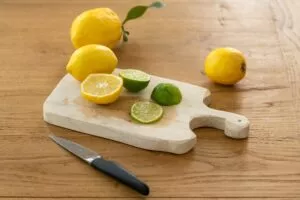
The Best Cutting Boards in Canada
Our top picks
There’s a multitude of cutting boards available today wherever you look – who knew that you could even get a glass cutting board, a marble cutting board or even a 3D cutting board? I’m sure there’s a lot of you out there that haven’t changed your cutting board in over 10 years. As weird as it counts, cutting boards have come pretty far since then – there are a lot more variety and various features that they all come with now.
Still, just because there’s more variety doesn’t mean that it’s apparent what the best cutting board is. For example, the best cutting board material really depends on what you intend to do with your chopping board or how often you use it. It goes without saying that that’s different for everybody!
Don’t worry though – you’re not alone on your search for the ultimate cutting board. Lucky for you, you won’t have to sift through a mountain of cutting board reviews to find your perfect one. We’ve drawn up a list of the top chopping boards here in this guide so you don’t have to wade through countless web pages. There are boards for all sorts of different preferences in this guide, so you’ll definitely be able to find the best cutting board available in Canada suited to your needs by the end of this guide.
- Best professional cutting board: Madeira Edge-Grain Teak Jumbo Chop Block
- Best cheap cutting board: IKEA LEGITIM 13 1/2″ x 9 1/2″ Cutting & Chopping Board
- Best teak cutting board: Lipper International 7218 Teak Wood End Grain Kitchen Chopping Block
- Best bamboo cutting board: Totally Bamboo Kauai Cutting Board
- Best small cutting board: Ironwood Gourmet Bowery End Grain Cheese and Charcuterie Board
- Best round cutting board: Ironwood Gourmet Round Paddle Board
- Best polypropylene cutting board: OXO Good Grips Prep Cutting Board
- Best flexible cutting board: Simply Genius (8 Piece) Extra Thick Cutting Boards for Kitchen Prep
How to choose a cutting board
Here’s what to consider before you select a chopping board or move one off your list onto the chopping block.
- Durability – Whether you’re looking for large cutting boards or small cutting boards, you’re going to want one that lasts – you don’t want to have it last for only one wash cycle or have it come apart in your hands after a few uses. Some cutting boards are more prone to warping after washing (such as plastic mats), so you’ll want to look out for that. Hinged cutting boards are pretty likely to come apart at – you guessed it – the hinges after extended use. Cutting boards made of softer woods may be easier on your knives but they also accumulate damage and grooves more easily than cutting boards made of harder wood.
- Stability – If you don’t want to be folding a wet paper towel underneath your cutting board every time you need to cut something up, you’ll want to find a cutting board that won’t slip and slide while you’re hacking away. If you’re already bad with knives (like me), a cutting board that slips and slides everywhere definitely isn’t going to help you with your knife skills.
- Ease of cleaning – Some people don’t mind putting in a little work when it comes to cleaning their cutting boards. But you should know that not all cutting boards can be thrown into your dishwasher. If you know you’re lazy about washing your kitchenware, you should probably hold off on getting a fancy custom cutting board unless it happens to be dishwasher safe.
- Material – To sum up, a few widely used and preferred cutting board materials are maple, oak, bamboo and cherry woods; or plastic and paper composites, also called an Epicurean board. (Although some materials we suggest avoiding are glass, marble and granite. Those surfaces are hard and can make your knives dull quickly.) Wooden boards made from dense types of woods are durable, long-lasting and gentle on knives. Yet, they require more precise care than plastic boards: you cannot throw them into a dishwasher because high heat and detergent might split the wood. Instead, you can quickly wash it with dish soap, pat it with a towel and let air dry.
To say more about wood boards, they come in two types, edge-grain and end-grain. End-grain cutting boards are made by attaching pieces of wood in a cross-section manner. They are usually a few inches thick, more expensive, yet resilient. One thing to keep in mind about end-grain boards is they are more susceptible to moisture if not properly cared for: if you leave the board wet, the seams can come apart over time which creates tiny chasms that can harbour bacteria. As for edge-grain boards, it is a more common type where wood has been cut with the grain- the top of the board shows long wood fibres. They are more affordable than end-grain boards, yet because the long wood board fibres do not provide much give the boards are tougher on knives.
Meanwhile, plastic cutting boards are affordable, easy to clean by putting them into a dishwasher machine, yet they are known to have a shorter life span than wooden boards. Besides that, plastic boards tend to keep every single cut (while wooden boards have the ability to ‘heal’ themselves with their fibres bouncing back from a knife’s edge). The last type, Epicurean paper composite made boards are a great substitute for wooden boards. You do not have to oil them; they can be washed in a dishwashing machine and they come at an affordable price. Although paper composite boards might be a bit tough on your knives, they can be a great option if you want a durable, good-looking board without spending much and with no necessity to take extra care of it.
- Size – You can choose from a variety of forms and sizes when it comes to cutting boards, yet rectangular ones are the most convenient and practical choices. The standard rectangular board size is 12-by-18 inches. However, if you are looking for something larger to have on your counter there are 15-by-20 inches and 24-by-36 inches sizes available too. The typical thickness of kitchen boards is between half an inch to an inch, although some professional boards come in thickness close to two inches. In fact, end grain wooden boards are usually as thick as two inches. Hence, when you pick a board for your kitchen consider the size of your counter space and particular cooking needs. (Many people prefer having a large cutting board on their countertops that they find convenient for chopping a few ingredients at the same time.)
Tips on taking care of your wooden boards
- Wooden boards will keep their proper shape longer if they are thoroughly washed with dish soap and warm water right after use. Make sure to towel dry the board after washing and leave standing vertically to air dry. Never put a wooden board into a dishwasher for it will be the dramatic end of it.
- Use a mix of beeswax and food-safe mineral oil to polish wooden boards which will protect against stains and odours and will prevent splitting.
- Finally, the best way to store wooden boards is to leave them standing vertically on the edge. That will allow air circulation and will prevent warping. However, if you have a large wooden board that you decide to leave laying on the countertop then make sure the surface underneath the board is completely dry.
Best polypropelene cutting board
OXO Good Grips Cutting Board
For everyone in general, we think an OXO cutting board is a great choice. For one thing, it comes in a variety of sizes – you won’t be stuck with an extra large cutting board if all you want to do is cut some onions.
Another great quality about this cutting board is that it’s made from polypropylene, a non-porous and odour resistant material. No one wants to be smelling last week’s fish dinner on their cutting board for weeks on end.
In particular, customer reviews on Amazon praise this cutting board for being the best polypropylene cutting board as it’s non-slip, easy to wash and resistant to cuts. It even helps prevent countertop messes in the first place via grooves on the side that’ll catch any liquid that comes out of whatever you’re chopping.
Pros
- It has non-slip edges.
- Cut resistant cutting board.
- Dishwasher safe.
Cons
- The groove doesn’t hold too much liquid.
- The larger version may not fit your dishwasher.
Best cheap cutting board
IKEA LEGITIM Cutting and Chopping Board
IKEA seems to have everything from furniture to meatballs, so an IKEA cutting board isn’t all that surprising. If all you want is a simple cutting board with no frills or whistles, the Legitim cutting and chopping board from IKEA would be a pretty good contender – it has a rating of 4.1 stars on Amazon and is priced relatively affordably. The general consensus among reviewers is that it’s simple and sturdy and gets the job done.
Pros
- Large chopping surface (34×24 cm).
- BPA free.
Cons
- None.
Best small cutting board
Ironwood Gourmet Bowery End Grain Cheese and Charcuterie Board
This is an end-grain cutting board and a charcuterie board all in one. When you’re searching for the best charcuterie board, you’ll want something that’s both durable and pleasing to the eye. This board definitely has both features – it’s made out of end grain acacia wood. Acacia wood is known for its aesthetically pleasing patterns while end grain wood cutting boards are durable can ‘naturally heal’ knife marks on their surface, according to Good Cutting. This charcuterie board is listed at around $27 on Amazon along with a 4.3-star average rating – definitely worth considering if you’re out there trying to find the best cutting board for charcuterie.
Pros
- Multi-functional.
- Durable.
Cons
- It requires regular maintenance (ie. with butcher block oil).
- Some users find it too small.
Best teak cutting board
Lipper International Teak Wood End Grain Kitchen Chopping Block and Cutting Board
One thing that sets this butcher block cutting board apart from other boards is that it’s made with teak wood. In particular, teak wood is pretty durable due to its water-resistance properties and isn’t overly hard, which makes it less hard on your knife than other cutting boards. Plus, this butcher block is made from end grain wood, which has a self-healing factor when it comes to cut marks on the surface.
One question you might have is what’s the difference between a butcher block is cutting board and other cutting boards. Generally, butcher block cutting boards are thicker and heavier than regular boards. That helps prevent your board from sliding away when you’re cutting meat (especially meat with bones, which requires more force to cut). Plus, they will generally withstand the extra force you need for cutting meat better than ordinary cutting boards would.
Pros
- It comes in two different sizes.
- Reversible.
- Moisture resistant.
Cons
- Not dishwasher safe.
- It requires regular oiling.
Best bamboo cutting board
Totally Bamboo Kauai Cutting Board
Bamboo isn’t just a food source for pandas – it turns out it’s also a material for chopping boards. Just like the Epicurean cutting board, this cutting board is one to consider if you’re worried about sustainability and the eco-friendliness of your products. For one, you won’t have to worry about depleting pandas of their food – the forests from which the bamboo for this cutting board is from aren’t designated habitats or food sources for pandas. What’s particularly interesting to note about bamboo is that it doesn’t need to be replanted every time you harvest it – it’s quite renewable in comparison to hardwood trees that require replanting and long growth cycles (approximately 4.5 years vs 30-60 years).
The cutting board itself is free of dyes and is made with food-safe glue, ensuring the quality of whatever ingredients you cut on it.
Pros
- Sustainably sourced.
- Harder and more durable than comparable boards.
Cons
- Not dishwasher safe.
- It requires maintenance (conditioning).
Best professional cutting board
Madeira edge-grain teak jumbo chop block
This professional cutting board is made from teak wood that is beautifully grained and can serve as a chopping block and a sophisticated serving platter. If you host a crowd of guests, it can be assembled as an over-the-top charcuterie board, while during cooking it can be a spacious surface to chop and prepare necessary ingredients without using a few small boards. As one satisfied customer noticed, it is a great size board for slicing literally everything: it is a little heavy, but it stays put and does not slide.
We suggest, however, taking proper care of this Madeira cutting board: wash it with dish soap right after cooking, use mineral oil for coating and if you leave it on the countertop make sure the surface underneath is completely dry.
Pros
- High quality teak wood.
- Large and stable.
- Multifunctional.
Cons
- Expensive.
- Requires oiling.
Best round cutting board
Ironwood gourmet round paddle board
The best round cutting board we have found on Amazon is made from acacia wood that features unique and natural patterns. The board looks sophisticated enough you can serve blue cheese, baguette and some fruits on it during a romantic dinner. (Some customers noted they also use it for serving pizza.) Besides that, the board is large enough to chop ingredients conveniently and compact enough to easily store it standing on the counter. It also features a grommet which you can use for hanging the board on display to save some space on the countertop.
The board is easy to maintain and clean: you can simply wash it with warm water and soap and let air dry. Also, to keep the vibrancy of the natural wood pattern treat it with mineral oil once in a while.
Pros
- Durable acacia wood.
- Convenient size.
- Multifunctional.
- Has a grommet for hanging.
Cons
- Some customers found it smaller than expected.
Best flexible cutting board
Simbly Genius 8-piece extra thick cutting boards
Simply Genius cutting boards are a set of eight flexible sheets that are made with high-quality materials. The boards are extra thick and durable, thus suitable for all types of food preparation. Odor-resistant flexible boards are ideal for chopping vegetables, seafood, poultry and meat. Each board has a textured finish on the top that allows you to use even the sharpest knives in your kitchen; the texture is designed to stabilize knife movements while cutting, as well as it helps to reduce cut marks.
Because the boards are flexible and thin enough, they are easy to store in a cabinet drawer, and you can always fold them under a proper angle to funnel chopped carrots into boiling bouillon.
Pros
- Comes in four colours and two sizes.
- Ultra-flexible and non-slip texture.
- BPA-free plastic.
- Easy to store.
Cons
- Not dishwasher safe.
Other cutting boards we liked
Epicurean Kitchen Series Cutting Board
Something unique about Epicurean cutting boards is that they’re made of an eco-friendly wood composite material. Not many people think about where their cutting boards go once you throw them out – an Epicurean cutting board could be a good way of helping cut down non-degradable waste that goes into landfills.
Moving on to the cutting board itself, there are a few things worth noting. One, this board is knife friendly, meaning it’ll wear down your knife less relative to other cutting boards. Two, this board is maintenance-free – you don’t need to oil or bleach it. When you’re busy with your everyday life, having one less thing to remember to do is always a plus.
You can also use this chopping board as a trivet (a surface to serve your hot plates or bowls on) without worrying about damage from the heat since this board is heat resistant up to 176 degrees Celsius.
Overall, this board has an average rating of 4.3 stars on Amazon. In particular, one review really attests to the longevity of these boards – “My oldest [Epicurean Kitchen Series cutting boards] are probably close to 10 years old and still look great without any deep scratches or grooves.”
Pros
- Eco-friendly.
- Maintenance-free.
- Dishwasher safe.
Cons
- When wet, they may smell like wet cardboard.
Prepworks from Progressive Cutting Board
Here’s another relatively simple cutting board with a handle that pretty much anyone will find useful and easy to use. This cutting board from Prepworks is made from polyethylene, which is resistant to moisture, odour and bacteria. It also features a reservoir that collects excess liquids from whatever you’re chopping, so you will have less clean up to do later. If you hate handwashing boards, this chopping board will be perfect for you since it’s dishwasher friendly. You can also easily hang it up to dry or hang it up to store since it has a handle.
Pros
- Relatively affordable.
- Dishwasher safe.
- Resistant to smells.
Cons
- Some users find it not very stable.
- It might be too large for your dishwasher.
Prepworks from Progressive Over The Sink Cutting Board
If you hate having to clean up cutting board scraps from your counter and floor, you’ll probably love over the sink cutting boards. They’re exactly what they sound like – they’re cutting boards that fit over your sink so that your sink catches any of the peelings or scraps that accumulate during your prep work. From there, you can just turn on your garburator and you’ve saved yourself from having to clean up a mess.
You won’t even have to do any work washing this cutting board itself since it’s dishwasher safe. The removable colander that comes with this board also helps keep your kitchen space by allowing for excess water or juice to go into the sink instead of your countertop.
While it is a little bit pricier than other chopping boards, a rating of 4.4 Amazon and positive reviews attesting to its functionality make it worth considering.
Pros
- It organizes your cooking.
- Dishwasher safe.
- It reduces your clean up time.
Cons
- Reviews note the surface may stain easily.
Our methodology
There’s an enormous amount of cutting boards out there – comparing them all is more than enough to make your head spin. We’ve spent over 10 hours reviewing the top cutting boards available in Canada and comparing their features. We’ve taken into account verified customer reviews, as well as information from trusted sites and sources such as the United States Department of Agriculture (USDA) and food safety experts. The review process for this article was data-backed and fact-checked and also includes personal views.
For this buying guide, we wanted the boards to be affordable for a wide range of people, so we paid special mind to the budget and tried to keep most boards under $50. We also only took into account cutting boards with a rating of at least four stars or higher.
What makes a good cutting board depends on what every individual is looking for, so we tried to cater to as many people as possible – we tried to cover a large range of needs such as minimal maintenance, environmental consciousness, durability and aesthetically pleasing appearance.
Frequent cutting board questions
What is the best wood for cutting boards?
When it comes to selecting a cutting board, considering the type of wood it’s made out of is definitely important. A guide by Misen suggests choosing hardwood cutting boards since they’re more dense – thicker boards are less likely to split as well as less likely to absorb moisture and warp.
However, you don’t necessarily want to pick the hardest wood that you can find. There are drawbacks for wood that’s either too soft or too hard. Wood that’s too soft will be more easily damaged and will accumulate grooves that bacteria can grow in. On the other hand, a cutting board made out of wood that’s too hard will probably dull and possibly even damage your knife with repeated use.
If you’re wondering how you can tell if a wood is too hard or too soft, it’s actually pretty simple. The Janka hardness test denotes the relative hardness of wood – wood with a hardness rating between 900-1500 is most suitable for cutting boards (examples of appropriate include cherry or maple). In contrast, a larch wood cutting board would only have a hardness of around 830 and may not be the best cutting board due to it probably being more easily damaged.
What is the best cutting board size?
That depends on a number of things, such as how much space you have on your countertop for your cutting board as well as what you’ll be using your cutting board for. There’s no sense in having a huge cutting board if all you’re going to do is chop some onions or garlic here and there. According to the Michelin Guide, however, 12 x 18 inches is a reasonable and standard size for a chopping board.
Should I use a wood or plastic cutting board?
The answer might not be as clear or as straight forward as you think. According to an article by the NC State University, a plastic cutting board is easier to sanitize than a wooden cutting board. However, plastic cutting boards harbour more grooves than wooden cutting boards do after you use a knife on them. Generally, more grooves mean more places for bacteria to linger and grow. Ben Chapman, food safety research expert from NC State, recommends that you use plastic cutting boards for meat and a wooden cutting board for fruits, vegetables and other foods that you can consume without any preparation.
How to clean a cutting board?
The US Department of Agriculture recommends that you clean all types of cutting boards with hot, soapy water, rinse with clear water and either air dry or pat dry with paper towels after each use. Certain types of cutting boards (such as a solid wood cutting board, plastic cutting board or non-porous acrylic cutting board) can be washed in a dishwasher.
How to avoid harmful bacteria on cutting boards?
You can sanitize both wooden and plastic cutting boards via adding 1 tablespoon of liquid, chlorine bleach per gallon (3.79 L) of water and covering the surfaces of your board with this solution for several minutes. Afterwards, you should rinse your board thoroughly with clear water and either air dry your cutting board or pat it dry with paper towels.
As a more preventative measure, the US Department of Agriculture suggests using a bamboo board since they’re harder less porous than hardwood boards. They also resist scarring from knives, meaning that they’ll have fewer grooves for bacteria to accumulate and grow in.
The US Department of Agriculture also recommends that you replace your cutting boards once they’re very worn or have several grooves that are difficult to clean to help avoid contaminating your food with bacteria that grow in such grooves.
Acacia vs Teak Cutting Board: Which one is the best?
It really comes down to your preferences. According to Teak Patio Furniture World, teak has natural oils that protect it from rotting while acacia wood does not. Thus, acacia might need more regular maintenance than teak wood cutting boards. However, acacia wood generally tends to be cheaper than teak wood so the difference in cost might make it worth choosing acacia wood boards over teak wood boards. If you’re looking for a board with a long lifespan requiring minimal maintenance, a teak wood cutting board may be more appropriate.
Honourable mentions
John Boos Reversible Cutting Board (Maple with juice groove)
A John Boos cutting board is definitely a bit more of an investment in comparison to a lot of the other cutting boards we’ve listed in this guide. It’s listed for a whopping of more than $100 on Amazon. If you can get past the sticker shock, there’s a number of things to consider about this board that might make it worth the price.
For one, this is an edge grain cutting board – edge grain cutting boards are typically more durable than end grain cutting boards, but they also happen to dull your knives faster too. It also happens to be reversible – you can flip your board over during prep work and use each side to cut different ingredients. One side even comes with a juice groove to help keep your countertop clean or for easy collection of meat juices to use in gravy.
However, this board requires a lot of maintenance in comparison to many of the boards in this guide. The manufacturer recommends applying oil and cream regularly as well as only hand washing the board. In summary, if you hate sharpening knives or if you don’t want to do a lot of maintenance, you might want to choose a different cutting board.
Virginia Boys Large Walnut Wood Cutting Board
A Virginia Boys cutting board is pretty up there in price for a 17” x 11” rectangular chopping board. It’s a multi-purpose board – it can be used for food prep as well as being a serving board for charcuterie or sushi.
Something unique about this board is that it’s been kiln dried before being polished and sanded in order to take excess moisture out – excess moisture in a board makes it more prone to warping or splitting.
If you’re protective of your knives, you’ll be happy to know that walnut wood boards are relatively soft and easier on your knives than other hardwood boards.
As with most other pricy boards, some maintenance (oiling or waxing) is needed to keep this board in peak condition. You’ll also need to handwash this board, so if you’re a fan of just throwing things into a dishwasher, this probably isn’t the board for you.
Ziruma Large Handmade Teak and Purple Heart Wood Cutting Board Hardwood Chopping Block and Cheese Serving Tray
Cutting boards don’t necessarily need to be brown and boring – this Ziruma handmade teak wood board has a purple heart (otherwise known as amaranth) wood accent running along its centre. You don’t have to sacrifice aesthetics for durability though – amaranth is a very hard and durable wood, with a Janka hardness rating of 2713. And as we’ve mentioned before, teak wood is a great choice for cutting boards due to its natural water-resistant properties. While it’s a bit pricier than the other boards we’ve looked at, the price might be worth it for its unique aesthetic appeal, as well as its ability to be used as a serving tray, cutting board and decorative piece all in one.
Read more
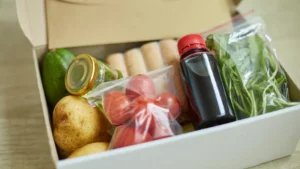
The Best Meal Kits in Canada
Check out this guide on the best meal kits in Canada.
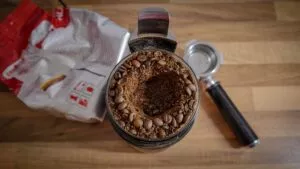
The Best Coffee Grinders in Canada
Quality beans are essential but the whole secret to the best brew is in the grinder.
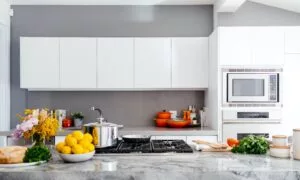
Kitchen Safety Guide: Essential Cooking Safety Standards
Safety is of the utmost importance when dealing with food items and other possible hazards.
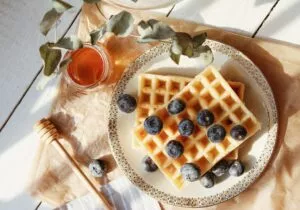
The Best Waffle Makers to Make Breakfast a Hit
Want crispy Belgian waffles to make breakfast special? Start your day with one of these waffle irons!
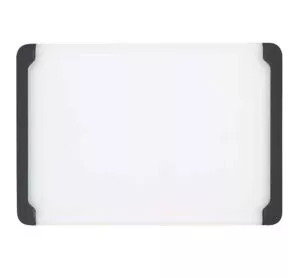
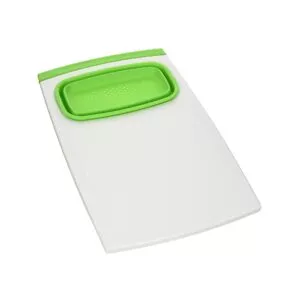
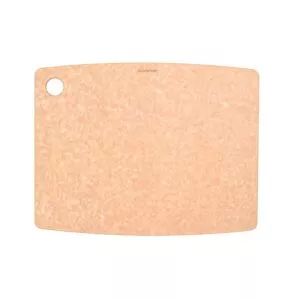
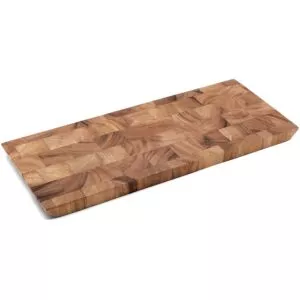
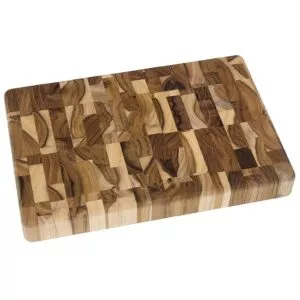
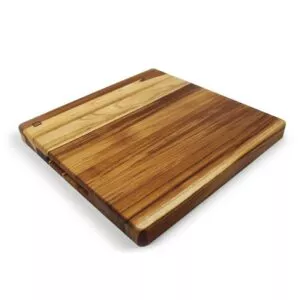
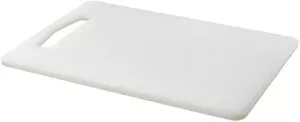
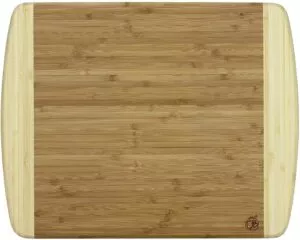
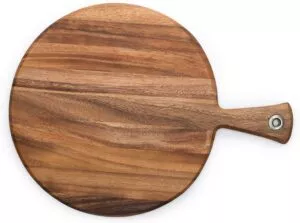
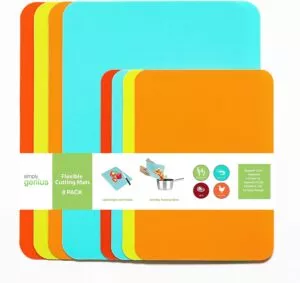
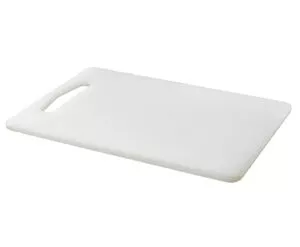
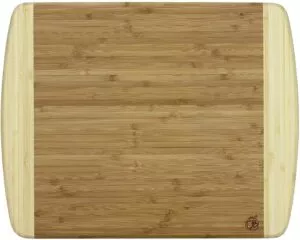
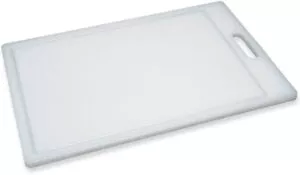
zyrtec canada over the counter types of allergy pills best allergy over the counter
best allergy medications over the counter kirkland allergy pills toronto alternatives to allergy medication
Tamoxifen and risk of contralateral breast cancer for BRCA1 and BRCA2 mutation carriers A combined analysis from the Kathleen Cuningham Foundation Consortium for Research into Familial Breast Cancer kConFab, the International BRCA1 and BRCA2 Carrier Cohort Study IBCCS, and the Breast Cancer Family Registry BCFR propecia uk